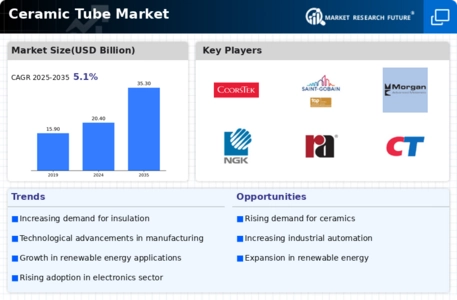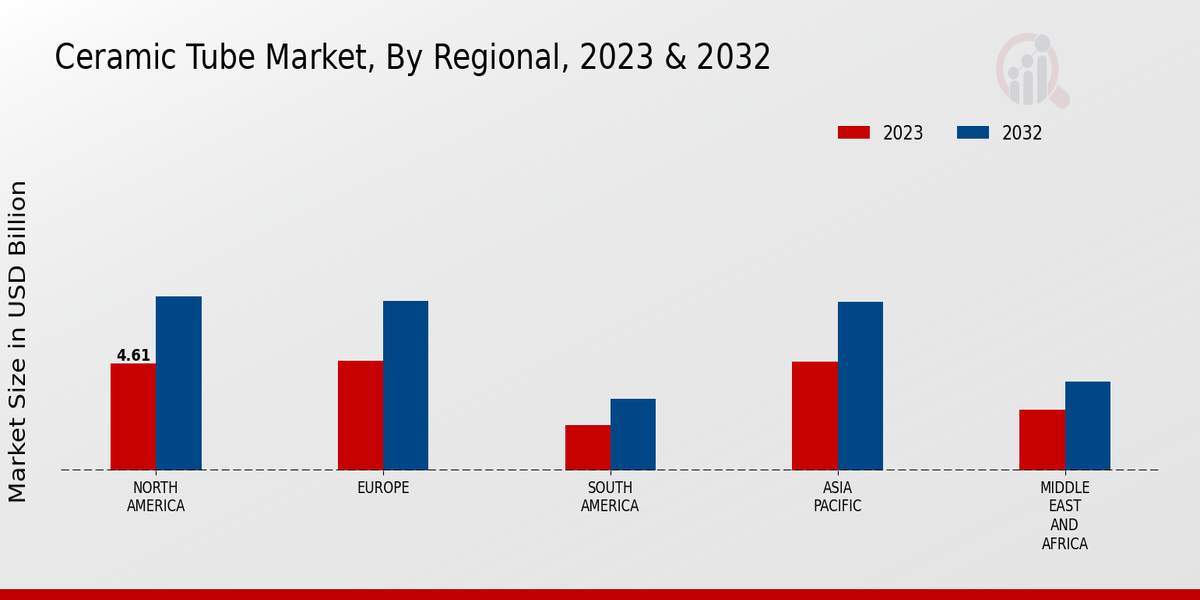Rising Industrial Applications
The Global Ceramic Tube Market Industry benefits from the rising industrial applications of ceramic tubes across multiple sectors. Industries such as chemical processing, oil and gas, and pharmaceuticals increasingly utilize ceramic tubes for their durability and resistance to harsh environments. These properties make ceramic tubes ideal for applications involving corrosive substances and extreme temperatures. As industrial sectors continue to expand, the demand for reliable and high-performance ceramic tubes is likely to increase, contributing to the overall growth of the market. This trend highlights the versatility of ceramic tubes in meeting the diverse needs of modern industries.
Increasing Demand in Electronics
The Global Ceramic Tube Market Industry experiences a notable surge in demand driven by the electronics sector. Ceramic tubes are integral components in various electronic devices, including capacitors and insulators. As the global electronics market expands, particularly in emerging economies, the need for high-performance ceramic tubes is anticipated to grow. This growth is reflected in the projected market size of 20.4 USD Billion in 2024, with expectations to reach 35.3 USD Billion by 2035. The compound annual growth rate (CAGR) of 5.07% from 2025 to 2035 further underscores the increasing reliance on ceramic tubes in advanced electronic applications.
Growth in Renewable Energy Sector
The Global Ceramic Tube Market Industry is positively impacted by the growth of the renewable energy sector. Ceramic tubes are essential in various renewable energy applications, including solar panels and wind turbines, where they serve as insulators and protect sensitive components. As countries worldwide invest in renewable energy infrastructure to meet sustainability goals, the demand for ceramic tubes is expected to rise. This trend aligns with the broader global shift towards cleaner energy sources, potentially driving market growth and innovation in ceramic tube applications tailored for renewable energy technologies.
Advancements in Manufacturing Technologies
Technological advancements in manufacturing processes significantly influence the Global Ceramic Tube Market Industry. Innovations such as additive manufacturing and precision engineering enhance the production capabilities of ceramic tubes, allowing for more complex designs and improved performance characteristics. These advancements not only reduce production costs but also increase the efficiency and reliability of ceramic tubes in various applications. As manufacturers adopt these new technologies, the market is likely to see a shift towards higher quality and more specialized ceramic tubes, catering to diverse industries such as aerospace, automotive, and telecommunications.
Environmental Regulations and Sustainability
The Global Ceramic Tube Market Industry is influenced by stringent environmental regulations and a growing emphasis on sustainability. As industries face increasing pressure to adopt eco-friendly practices, the demand for sustainable materials, including ceramic tubes, is on the rise. Ceramic tubes are often favored for their longevity and recyclability, aligning with global sustainability initiatives. Companies are increasingly seeking materials that minimize environmental impact, which could drive innovation in the ceramic tube market. This shift towards sustainable practices may not only enhance the market's growth but also foster the development of new ceramic tube products that meet evolving regulatory standards.


















Leave a Comment